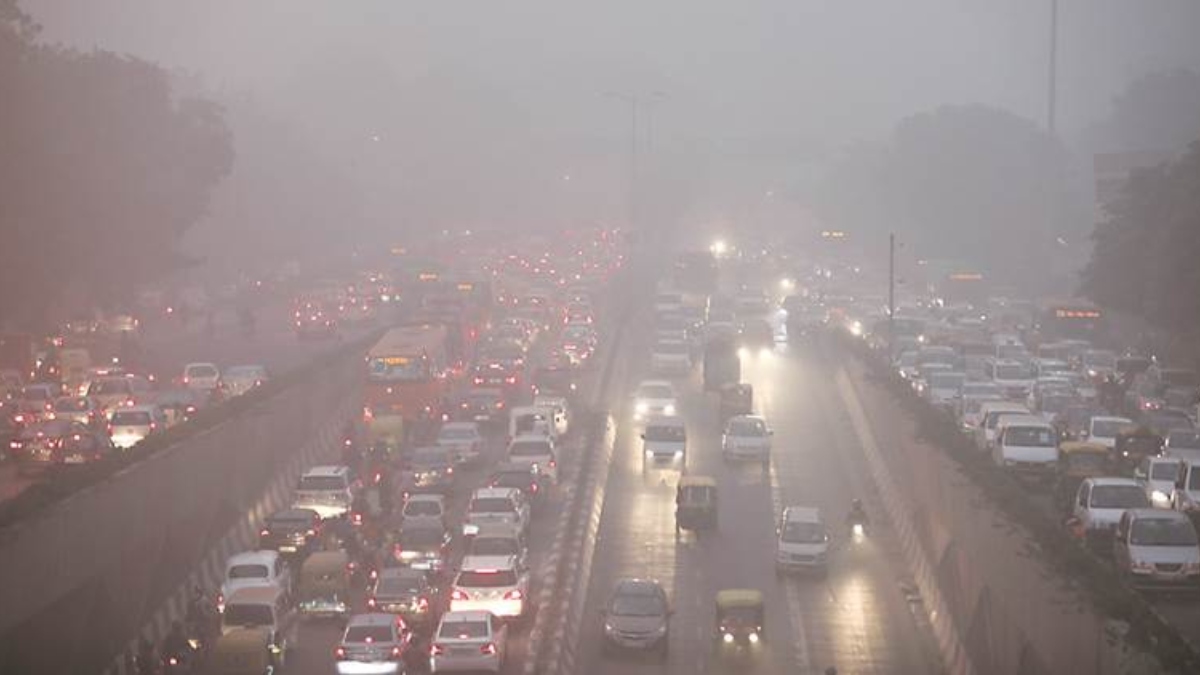Due to a favourable wind speed overnight, Delhi’s air quality slightly improved on Wednesday morning, but it was still recorded in a very poor category.
At 8 am, the overall air quality index was 323. However, the daytime’s gentler breezes could promote the accumulation of pollutants.
A Met official reported that on Tuesday night, winds with gusts of high to 30 kmph barreled through some areas of Delhi. It made the situation better.
The minimum temperature in Delhi was 16.9 degrees Celsius, which is three degrees higher than average. The highest temperature will probably be in the range of 30 degrees Celsius.
A western disturbance influencing the hilly terrain in the north is expected to cause partly overcast sky and very light rain during the day.
Better visibility levels of 1,400 metres at the Palam airport and 1,500 metres at the Safdarjung airport made the improvement in air quality noticeable.
On Tuesday, a smoky haze reduced visibility to 800 metres in these areas.
The air quality is expected to significantly improve starting on November 11 due to favourable wind speed — 15 to 20 kmph.
The capital’s 24-hour average air quality index stood at 372 on Tuesday. It was 354 on Monday, 339 on Sunday and 381 on Saturday.
An AQI between zero and 50 is considered good, 51 and 100 satisfactory, 101 and 200 moderate, 201 and 300 poor, 301 and 400 very poor, and 401 and 500 severe.
Farm fires in Punjab dropped from 2,487 on Monday to 605 on Tuesday. Their share in Delhi’s PM2.5 pollution dipped from 14 per cent on Monday to nine per cent on Tuesday, according to data from the Indian Agricultural Research Institute and SAFAR, a forecasting agency under the Union Ministry of Earth Sciences.
In response to “improvement” in the city’s air quality over the past few days, the Delhi government decided on Monday to reopen primary classes beginning on November 9 and to withdraw for 50% of its workers to work from home.
However, stage 3 of the Graded Response Action Plan would continue to prohibit the use of BS-III gasoline and BS-IV diesel four-wheelers in Delhi (GRAP).
A fine of Rs 20,000 could be assessed for breaking the restriction. Vehicles used for emergency services, official business, and election-related activities are exempt.
In an effort to improve public transportation and cut down on vehicle emissions, the Delhi government will operate 500 more buses in the city as part of the “Paryavaran Bus Sewa” initiative.
According to a study conducted by The Energy and Resources Institute in 2018, vehicular emissions account for around 40 per cent of the PM 2.5 pollution in the capital.
According to an analysis conducted by the Delhi Pollution Control Committee last year, people in the national capital breathe the worst air between November 1 and November 15 when stubble burning peaks and winters set in.
According to the Air Quality Life Index (AQLI), which was published in June by the Energy Policy Institute at the University of Chicago (EPIC), Delhi residents could lose 10 years of life expectancy as a result of the city’s poor air quality.









